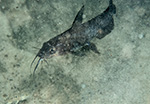Multi-locus phylogeny of the catfish genus Ictalurus Rafinesque, 1820 (Actinopterygii, Siluriformes) and its systematic and evolutionary implications
Par Pérez Rodríguez, Rodolfo, Omar Domínguez-Domínguez, Carlos Pedraza-Lara, Rogelio Rosas-Valdez, Gerardo Pérez-Ponce de León, Ana Berenice García-Andrade, Ignacio Doadrio
BMC Ecology and Evolution, 1-20 2023. DOI: 10.1186/s12862-023-02134-w
" Background Ictalurus is one of the most representative groups of North American freshwater fishes. Although this group has a well-studied fossil record and has been the subject of several morphological and molecular phylogenetic studies, incomplete taxonomic sampling and insufficient taxonomic studies have produced a rather complex classification, along with intricate patterns of evolutionary history in the genus that are considered unresolved and remain under debate.
Results Based on four loci and the most comprehensive taxonomic sampling analyzed to date, including currently recognized species, previously synonymized species, undescribed taxa, and poorly studied populations, this study produced a resolved phylogenetic framework that provided plausible species delimitation and an evolutionary time framework for the genus Ictalurus.
Conclusions Our phylogenetic hypothesis revealed that Ictalurus comprises at least 13 evolutionary units, partially corroborating the current classification and identifying populations that emerge as putative undescribed taxa. The divergence times of the species indicate that the diversification of Ictalurus dates to the early Oligocene, confirming its status as one of the oldest genera within the family Ictaluridae "
Classement: Taxonomie et phylogénie.
Langue: English
Reference in bibliography for genera (1)
Références bibliographiques pour l'espèce (10)
Nom substitutions
- Ictalurus dugesii dénommé Ictalurus ochoterenai, Ictalurus dugesii.
Pérez Rodríguez, Rodolfo & Omar Domínguez-Domínguez, Carlos Pedraza-Lara, Rogelio Rosas-Valdez, Gerardo Pérez-Ponce de León, Ana Berenice García-Andrade, Ignacio Doadrio. 2023. "Multi-locus phylogeny of the catfish genus Ictalurus Rafinesque, 1820 (Actinopterygii, Siluriformes) and its systematic and evolutionary implications". BMC Ecology and Evolution. 1-20. DOI: 10.1186/s12862-023-02134-w (ffm01231) (résumé)





